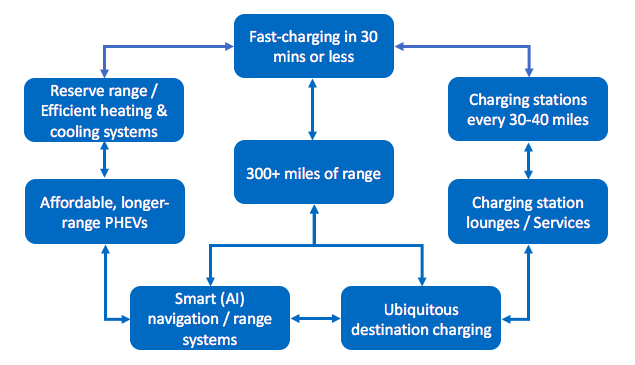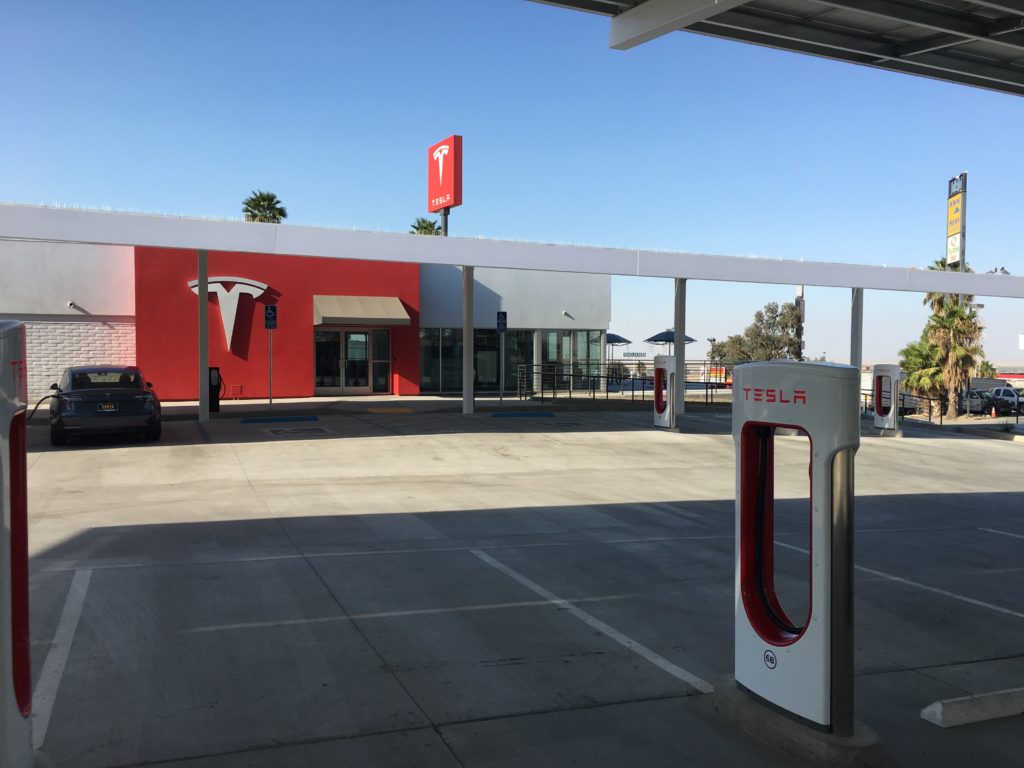“How long does it take you to charge?”
“How many times do you have to stop to charge?”
These are common questions people ask owners of an electric vehicle when discussing taking a road trip in an EV. They are legitimate questions, including for owners of EVs who may have yet to take a long road trip. But the answers can vary greatly based on many variables, including:
- The range of the EV
- Availability of fast charging stations along the route
- Charging speed capabilities of the EV and charging stations along the route
- Mileage length of trip
- Preferences and needs for resting, food and bathroom breaks

But putting all these variables aside for a moment, the fundamental question people are really asking is: How long will a road trip in an electric vehicle take in comparison to the same trip taken in an gas- or diesel-powered vehicle?
And so the answer to that question then requires a different way of thinking about electric vehicle road trips and measuring them differently. Does it really matter that much how long it takes to charge or how many times you stop to charge if your trip takes roughly the same total amount of time as when driving a gas vehicle?
For some gruffy folks yes. People who simply can’t get passed the idea that it takes longer to charge your EV than refill you gas vehicle, will not care about measuring the actual total trip time. But people who do the math and are focused on the quality of the trip – they will see the light.

Time for a Better Term: Trip Duration
“Charge time” as a metric needs to be replaced by a more equitable term such as “trip duration.” The key metric today when taking a road trip in an electric vehicle is how much longer the entire trip takes compared to if you were driving a gas- or diesel-powered vehicle. What you should care about as a driver of family is not how many times you stop or how long your EV was charging, but did you actually spend any unnecessary or unproductive time on the trip?
Besides time stopped to refuel, most drivers and families will stop at least a few times for food, beverages, restrooms, and to stretch. There are typically 3 road trip “stop” scenarios:
- Time stopped for gas and a restroom break and perhaps grabbing a coffee, cold beverage and/or a snack might take 10-15 minutes.
- Stopping for a meal at a fast, or quick-service restaurant probably takes around 30 minutes.
- If you opt for a full-service restaurant, you are looking at 45 minutes to an hour.
So on a 6 or 7 hour trip, for example, most drivers would likely stop at least twice – regardless of powertrain. A minority might only stop once and some 3 times.

As the average range of EVs approaches 300 miles of range and DC fast charging networks with very fast charge rates proliferate – many road trips will take the same overall duration time in an EV as in a gas- or diesel-powered vehicle.
So the question for a driver of any of these rest-break styles, did or would a particular road trip in an EV have a longer total trip duration than one taken in a gas- or diesel-powered vehicle? How many times you stopped or how long you charged for is in the larger scheme of a trip, mostly irrelevant.
So the next time someone asks an EV driver how long it takes to charge on a road trip – flip the conversation and ask them how many times they stop and for how long? Do they stop for a meal and for how long?
While electric vehicles with say only 200 miles of range and along routes without many DC fast-charging options will fail or not do well in this comparison, those days will disappear in the coming years.
As an electric vehicle industry, let’s flip the road trip conversation to “trip duration” and away from “charge time.”
 Announcing the acquisition of EVAdoption by Paren →
Announcing the acquisition of EVAdoption by Paren →

2 Responses
When I drive between Florida and New York, when I stop to eat I do the following:
1. Park my Tesla at the supercharger, and plug in
2. Goto restrooms
3. Get food, and sit down to eat
4. While eating, get message from car: “fully charged”
5. Get in car and continue driving.
Non-electric car drivers do the following:
1. Park the car.
2. Goto restrooms
3. Get food, and sit down to eat
4. When finished eating, get in car
5. Wait on line to get gasoline, fuel up
6. Get in car and continue driving.
Which takes less time?